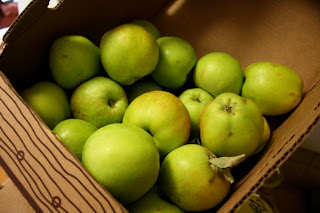The December stock-up market is almost here and with two weeks left before Christmas it’s the perfect time to pick up some goodies for your holiday meals. Winter can be a tough time for farmers so we’re extra excited that they’re sharing the last of their crops with us. Did you know that the drop in temperatures at this time of year really helps to bring out the flavor of hearty greens and root vegetables? The colder weather will convert starch to sugar, making the flavors in these veggies really shine.
Here is what you can expect at the market this week. Although you should keep in mind that it’s always hard to predict what the farmers will actually harvest that day.
Farms & Orchards:
If it’s fruits and veggies you’re looking for than you’ll want to hit up Phil and Dianne at Pd Farms who will most likely have garlic, onions, potatoes, amazing shallots and perhaps even beef jerky. Derek from Frog Meadow always has biodynamic staples and curiously delicious culinary surprises at a working class price. Paul at Little Gnome Farm is bound to have sneaky little heirloom surprises that will delight the eye and the palette, grown in small scale and close to the earth. The folks at Kiyokawa Family Orchard will likely have beautiful apples and pears. We’re also hoping there will be more winter squash this month.
Dairy:
Nancy at Alsea Acres Alpines will feature a selection of handmade fresh chevres and feta. Terry and Laurie at Fairview Farm will feature aged raw and pasteurized goat cheeses and pork.
Meat:
When it comes to grass fed beef, you’ll want to check out our friends at PD Farms. If it’s a nice piece of pork you desire then Fairview Farm is the place for you. Olympic Provisions will feature artisanal salami and other dry cured, smoked and fresh pork products created with local organic pork.
Eggs:
The following farms should have eggs this Sunday so fill up while you can; Little Gnome Farm, Pd Farms and Val's Veggies.
Bakers & Sweets:
Decadent Creations is whispered to have sweet Buche de Noel cakes and Gluten Free cheesecake plus much more. Jewelie at Sina Baking will be bringing the Brazilian cheese bread that is naturally gluten-free - look for hot samples too! Amanda at Scoop PDX will certainly have pints, quarts and scoops available in flavors like the uber popular salted caramel plus seasonals of egg nog, peppermint stick and pumpkin - as always, organic, small batch and local.
Ready to Eat:
Lisa at Thai Mama has the best eggrolls in town. Last week she surprised us with pumpkin curry, this week she should be bringing hot lemongrass tea. Yum!
























